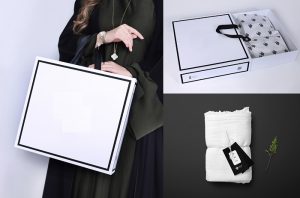Abaya Manufacturing

Artwork Design
The design for the abaya is created by our fashion designers or pattern makers. The design includes the style, shape, embellishments, and any other features of the abaya

Fabric Selection
The type of fabric chosen for the abaya depends on factors such as the desired look, comfort, and season. Common fabric choices include crepe, chiffon, silk, cotton, and polyester. according to customer requirement, we choice the fabric

Cutting
The chosen fabric is laid out on a cutting table, and the pattern pieces are carefully placed on it. Skilled workers then cut the fabric according to the pattern, ensuring precision and accuracy

Sewing
- The cut fabric pieces are taken to sewing machines where skilled seamstresses sew them together.
- The abaya’s main body is sewn together, sleeves are attached, and any additional design elements or embellishments are added during this stage.

Embellishments and Detailing
Depending on the design, embellishments such as embroidery, sequins, beads, lace, and other decorative elements are added to the abaya. Handwork might be required for intricate detailing.

Quality Control
Each abaya is inspected for quality, and fittings are done if necessary to ensure proper fit. Loose threads, uneven stitches, and other imperfections are addressed during this stage

Finishing
The abaya is pressed and steamed to give it a neat and polished appearance. Labels, tags, and other finishing touches are added.

Packaging
The finished abayas are carefully folded or hung and then packaged for distribution. Packaging might involve using plastic covers, boxes, or other protective materials to prevent damage during transportation.

Distribution
The abayas are then distributed to wholesalers, retailers, or directly to customers through various channels
